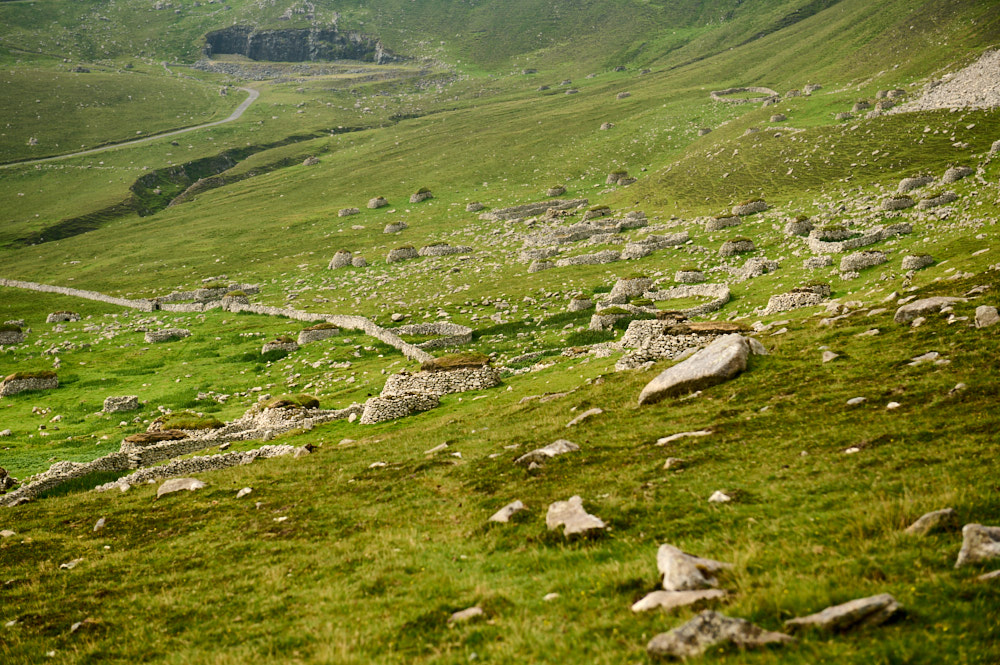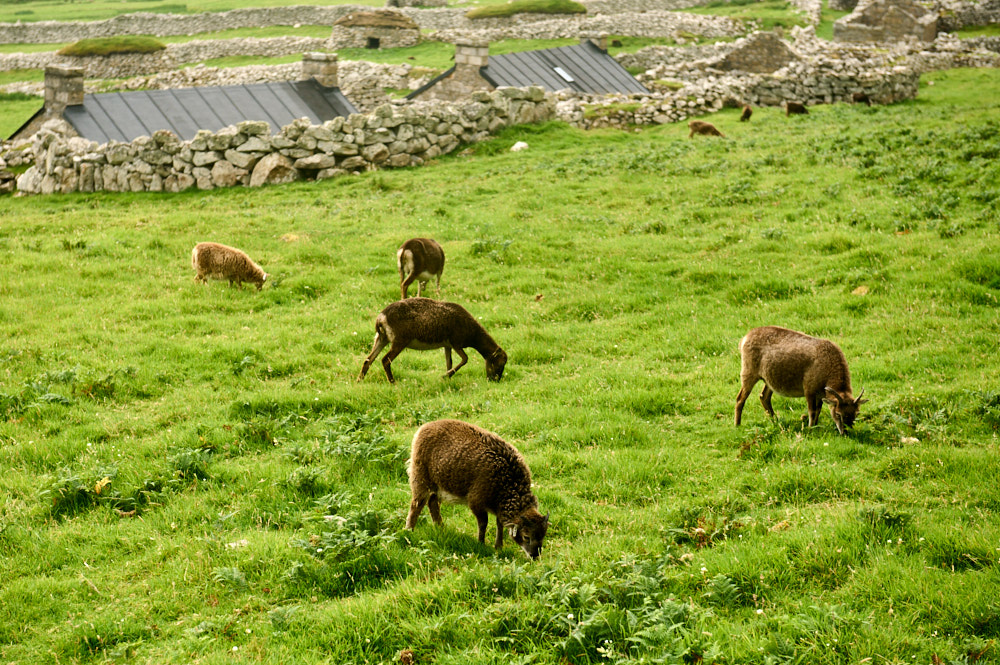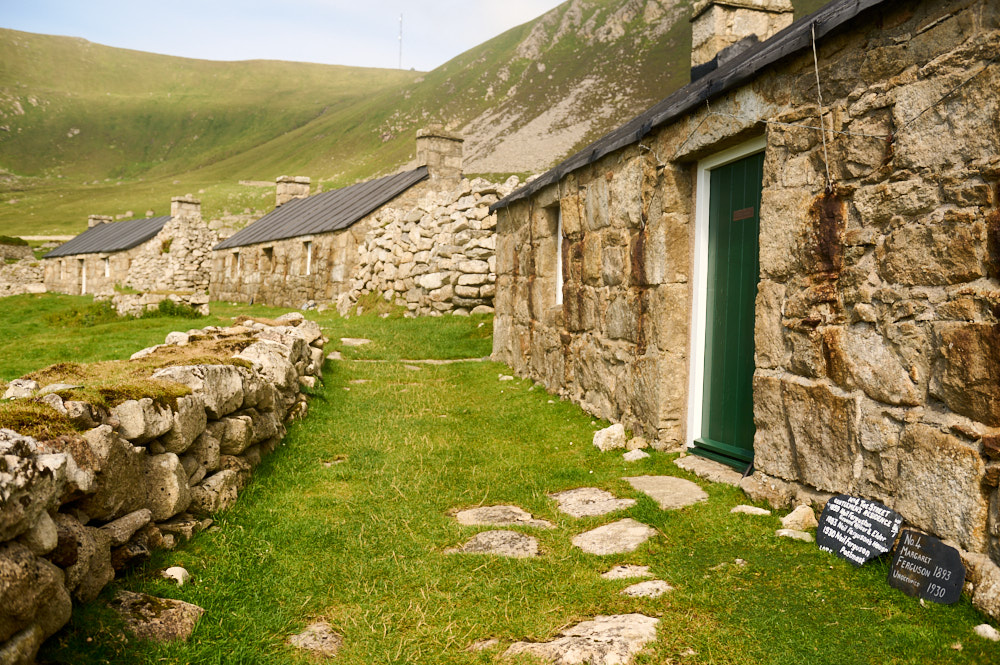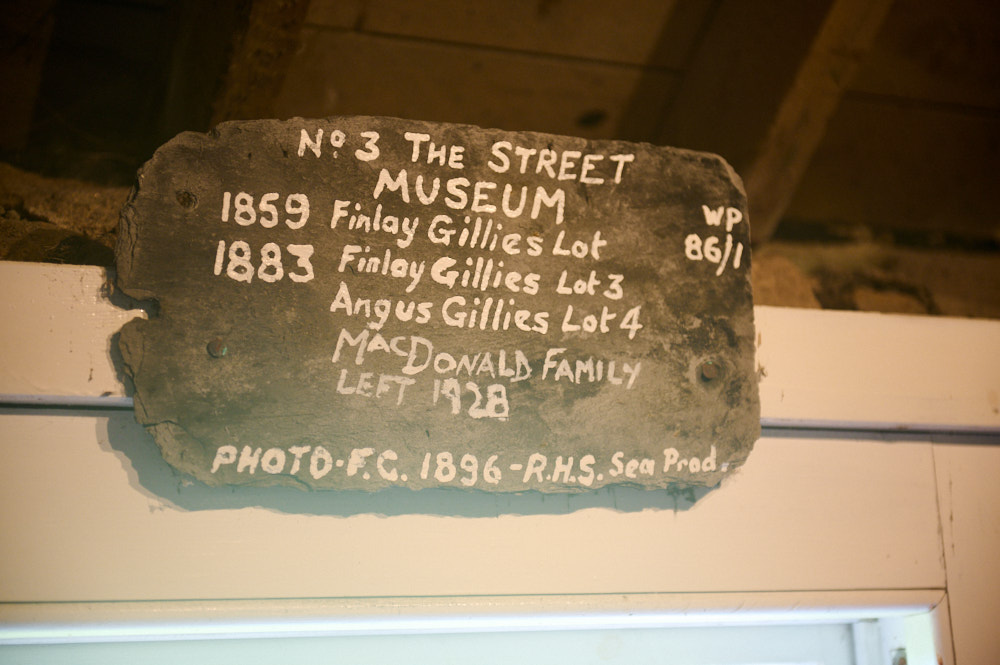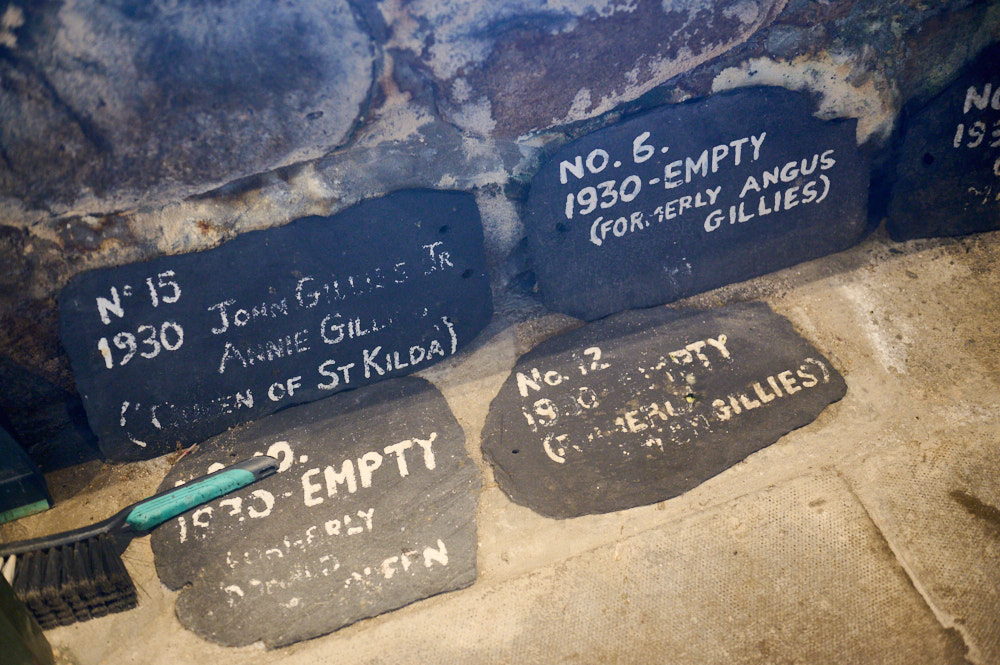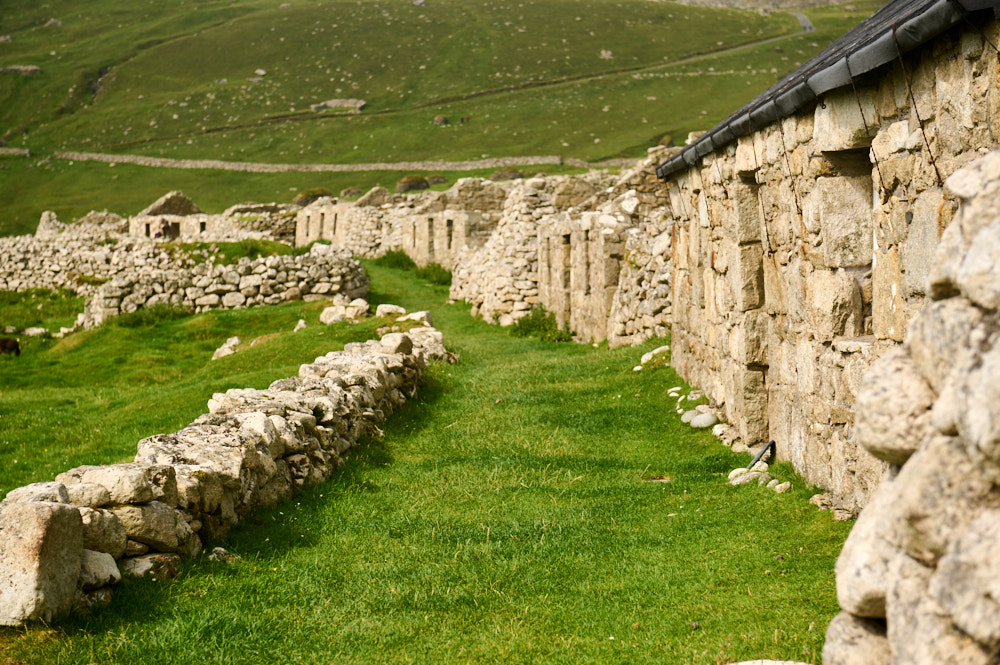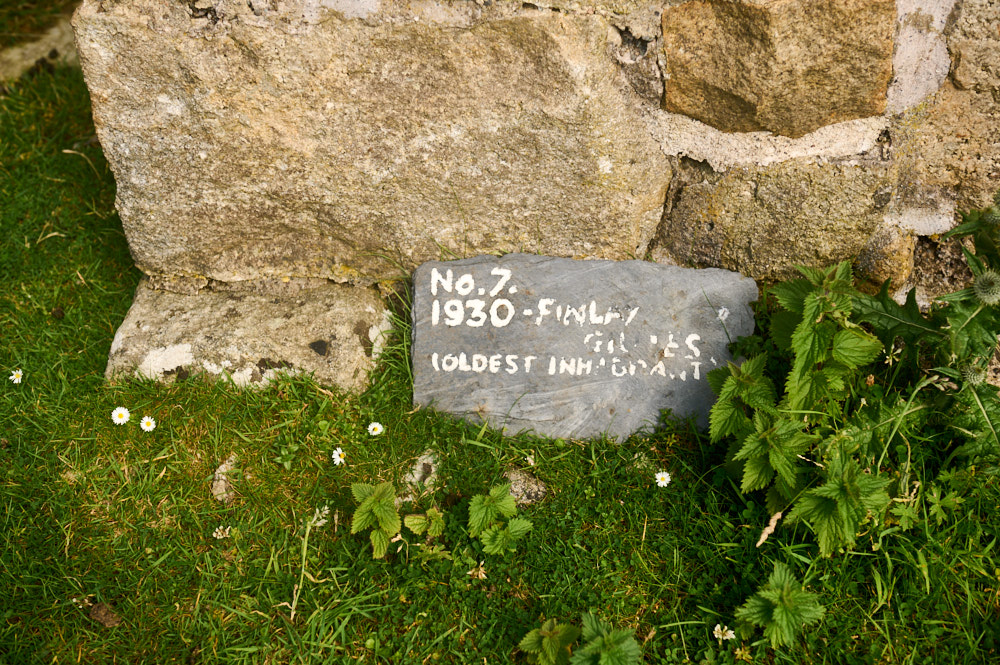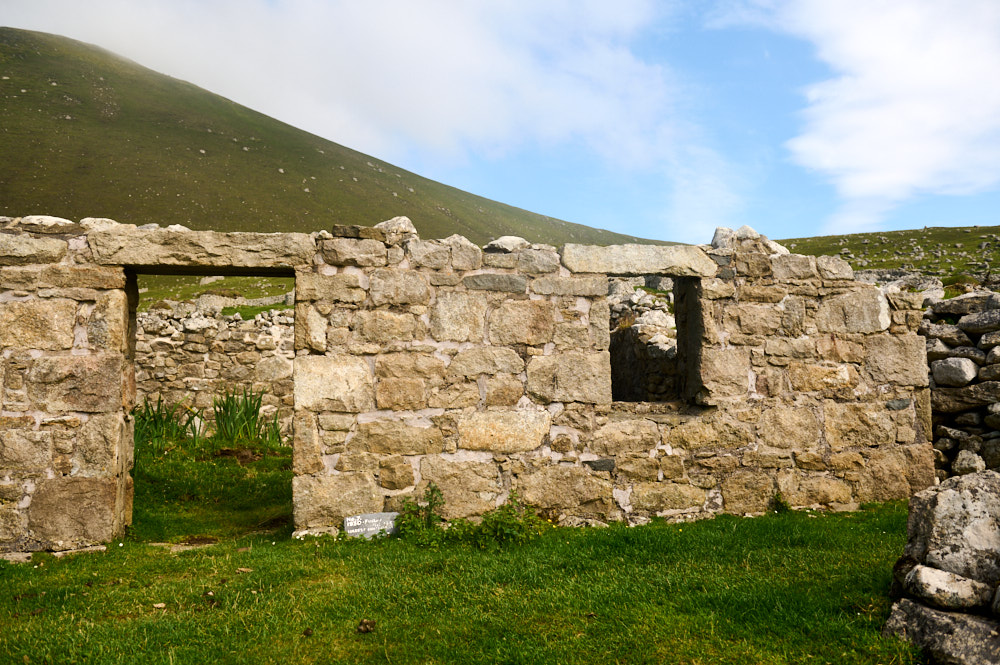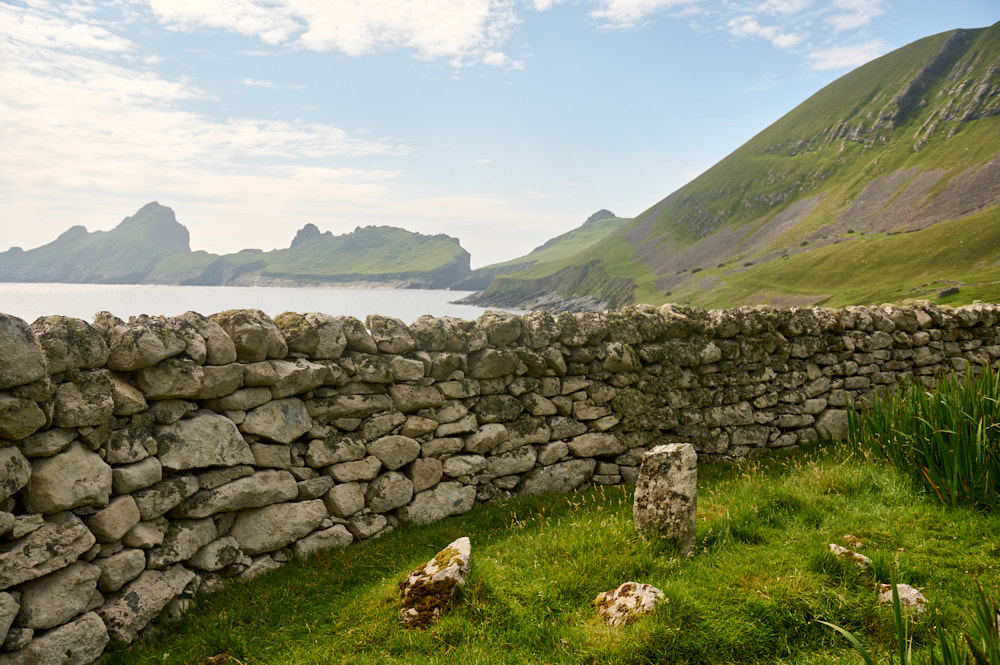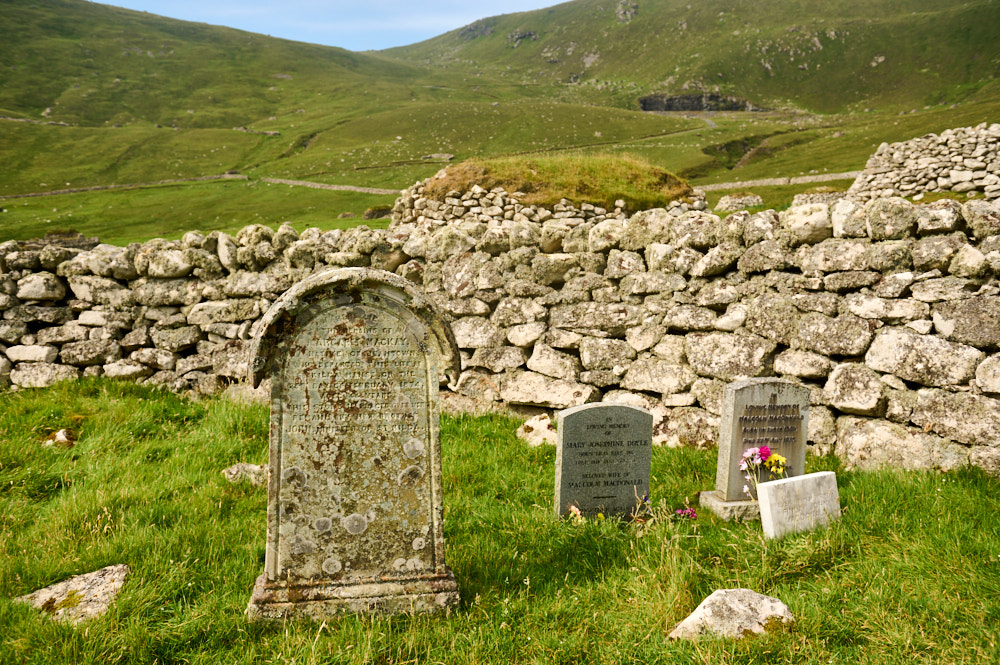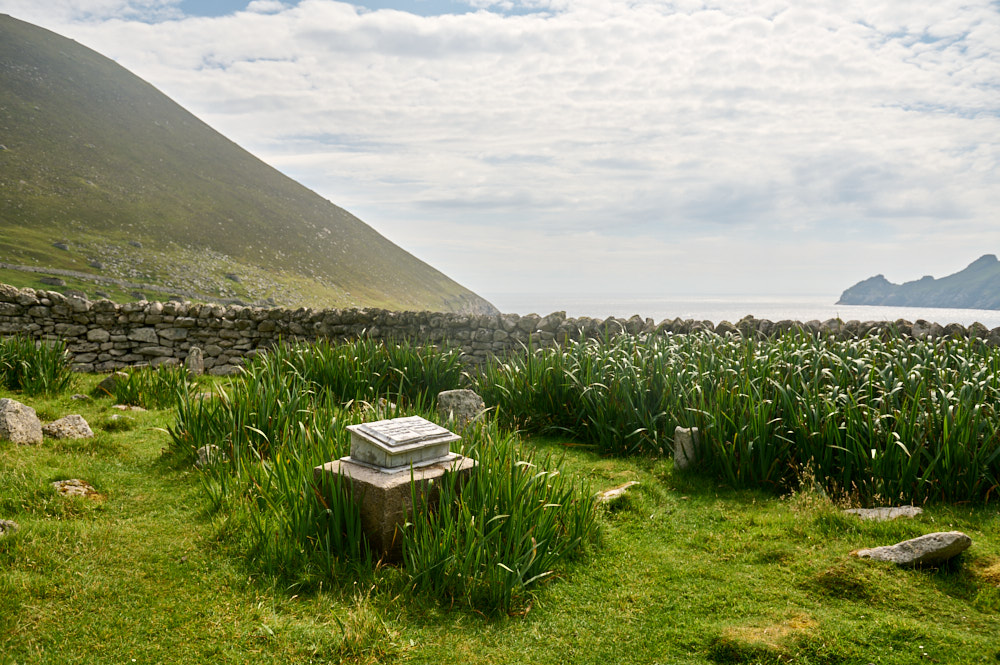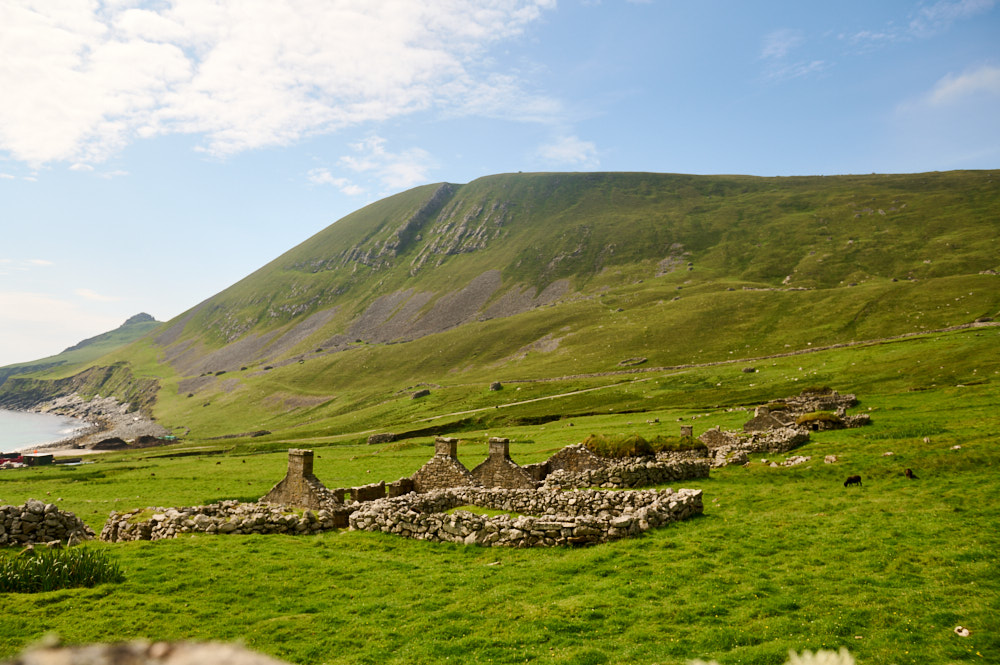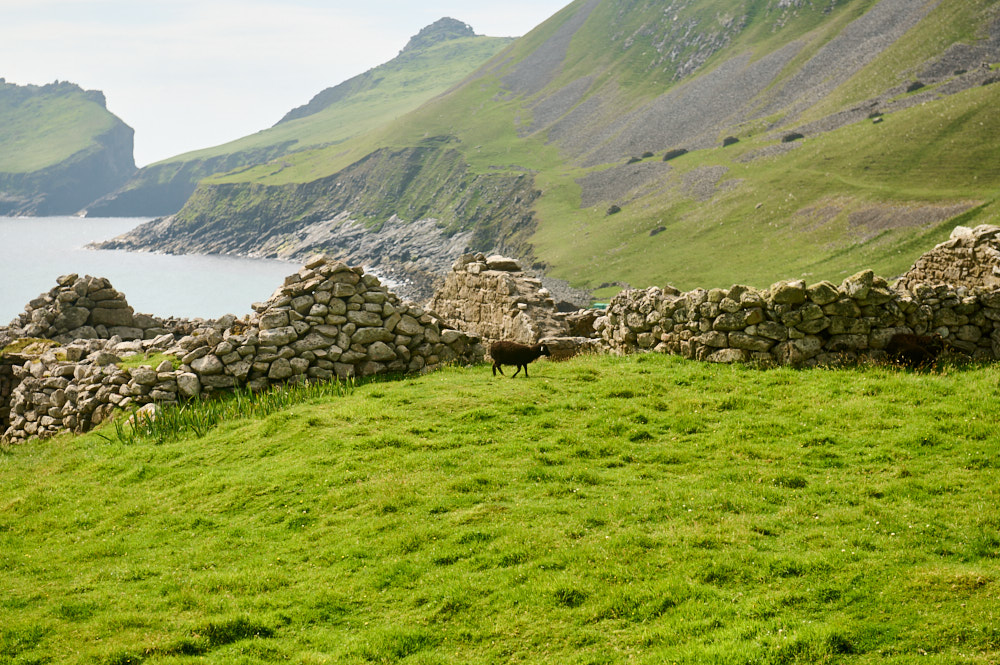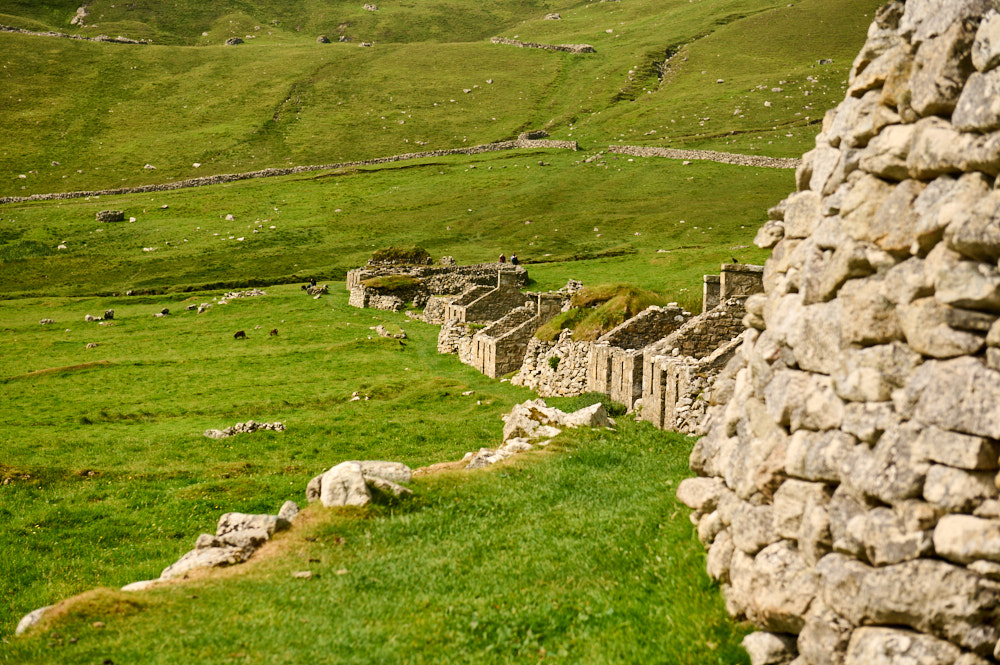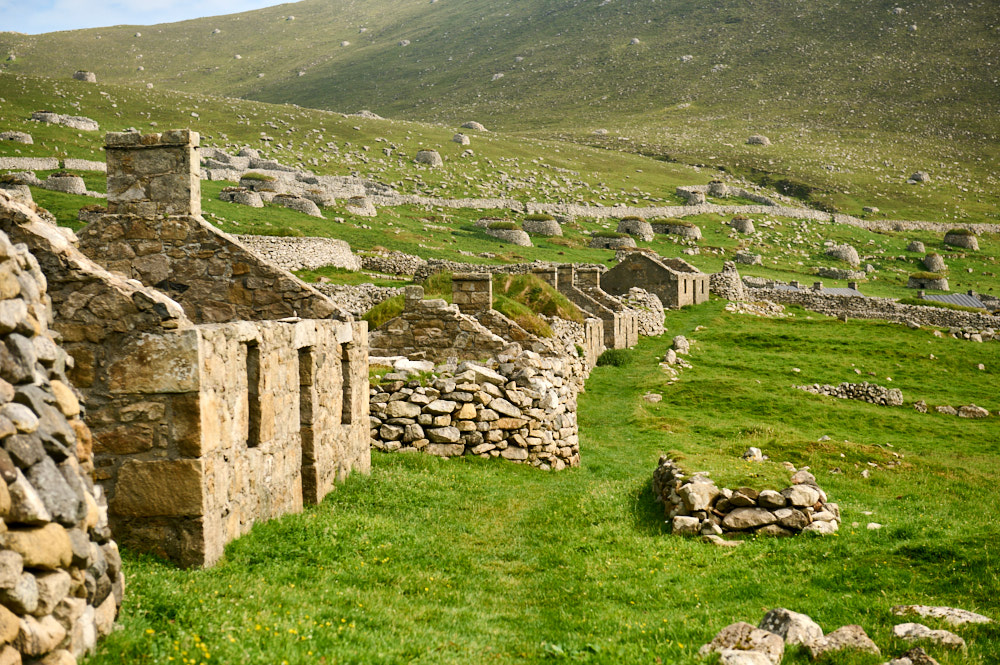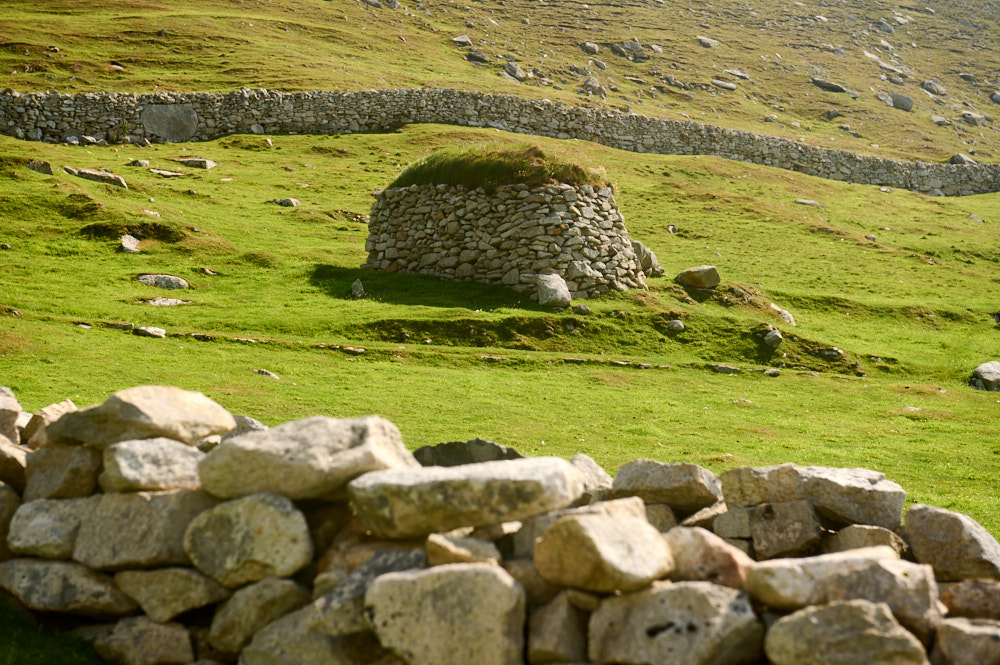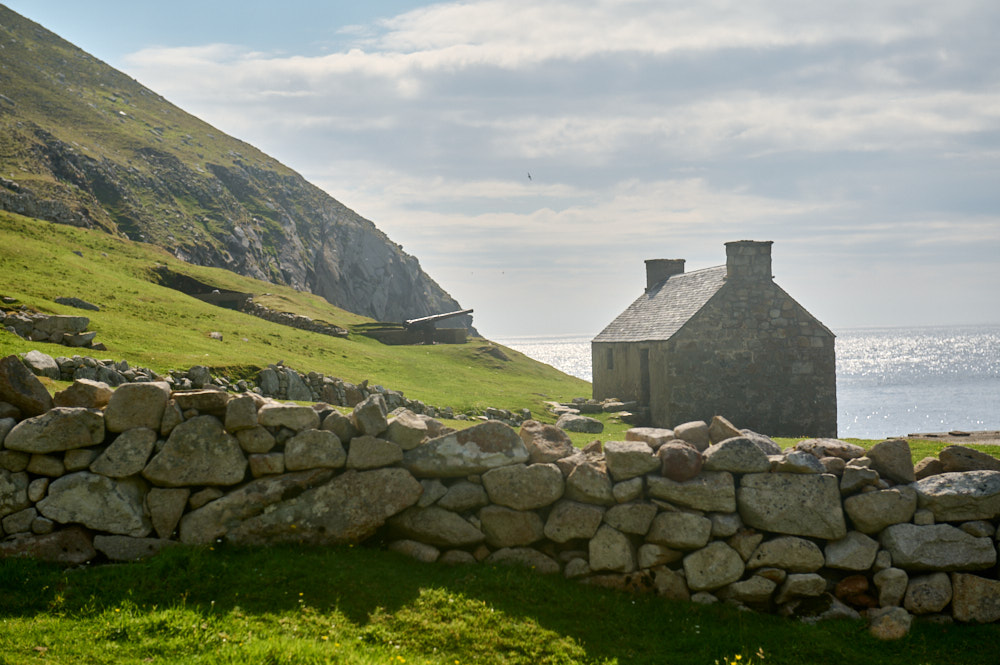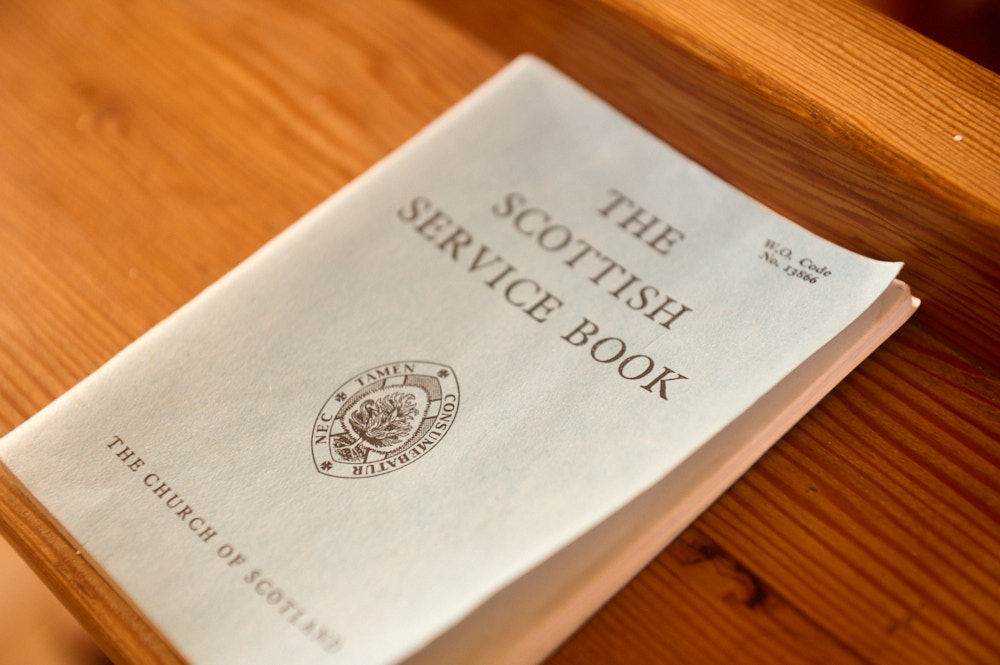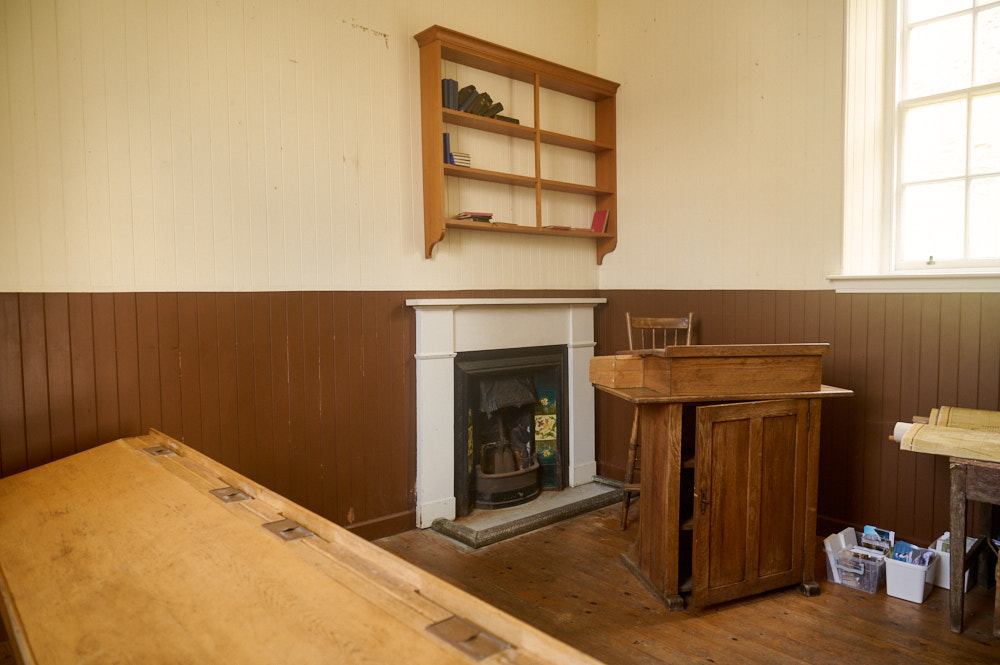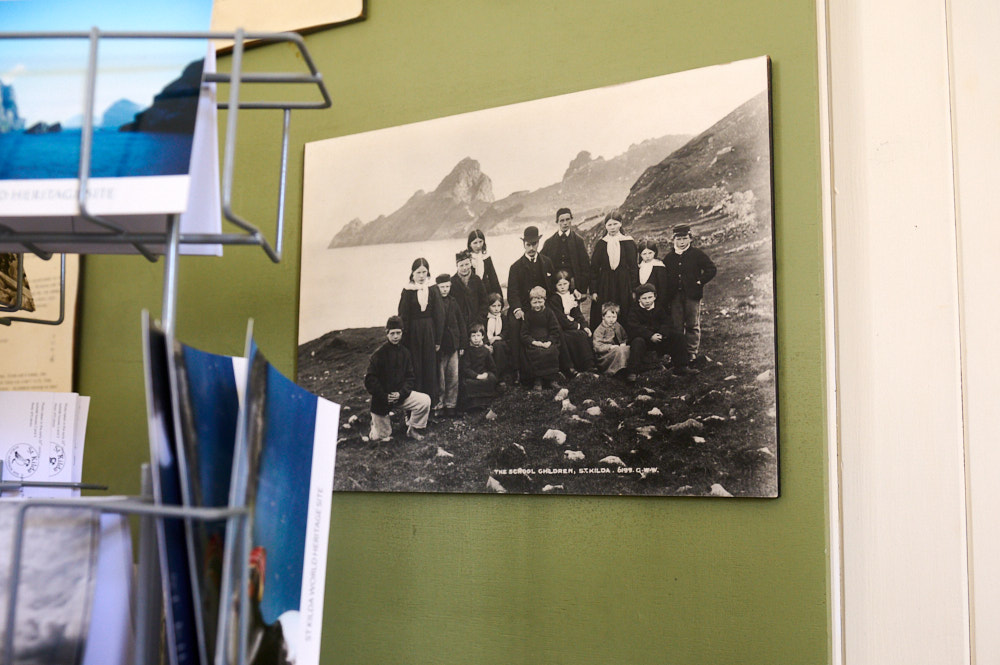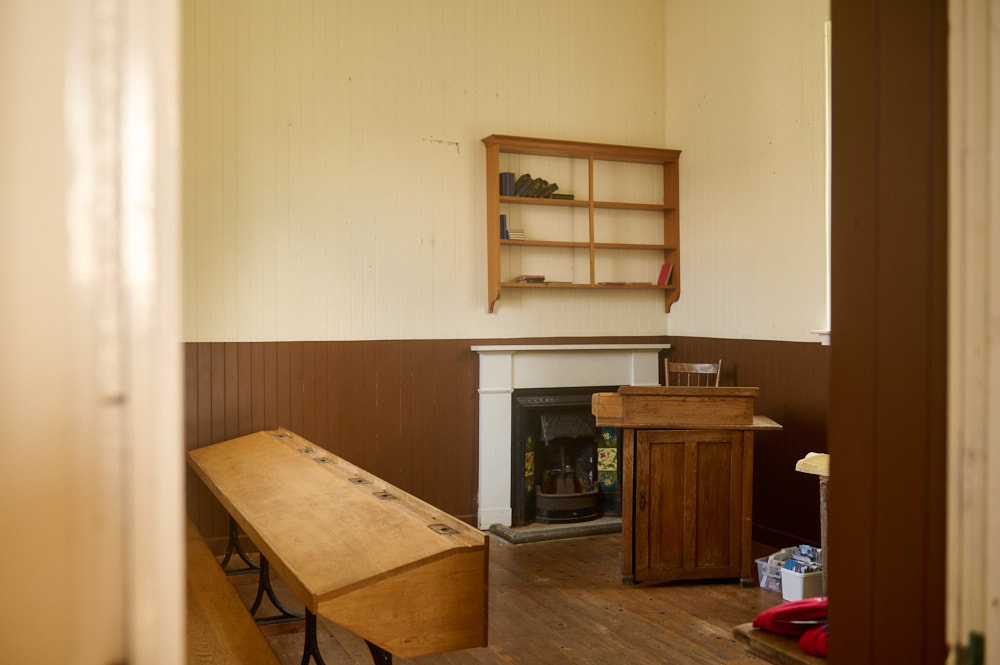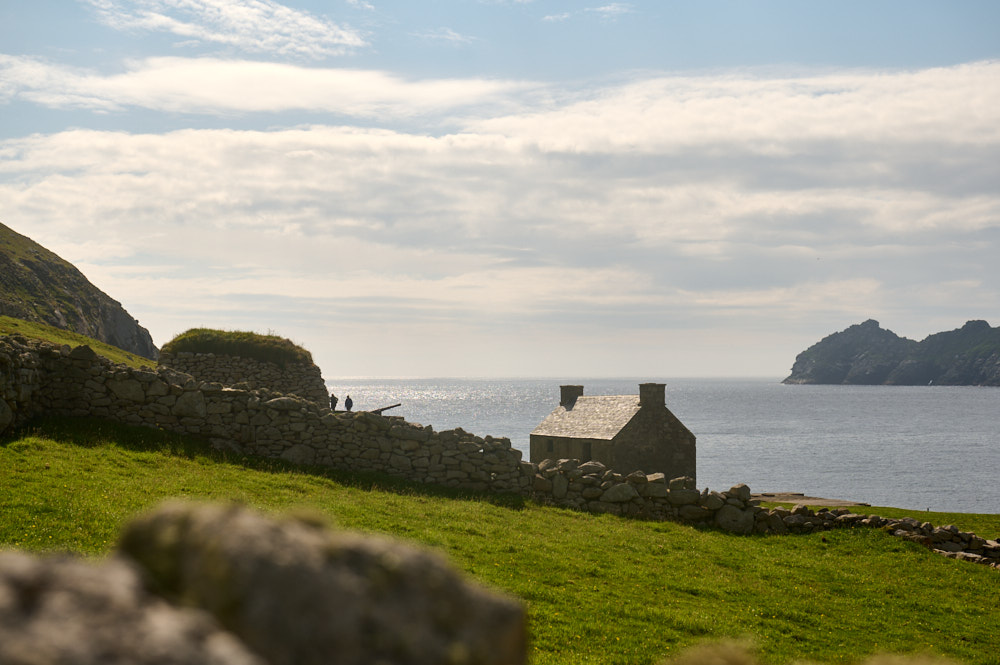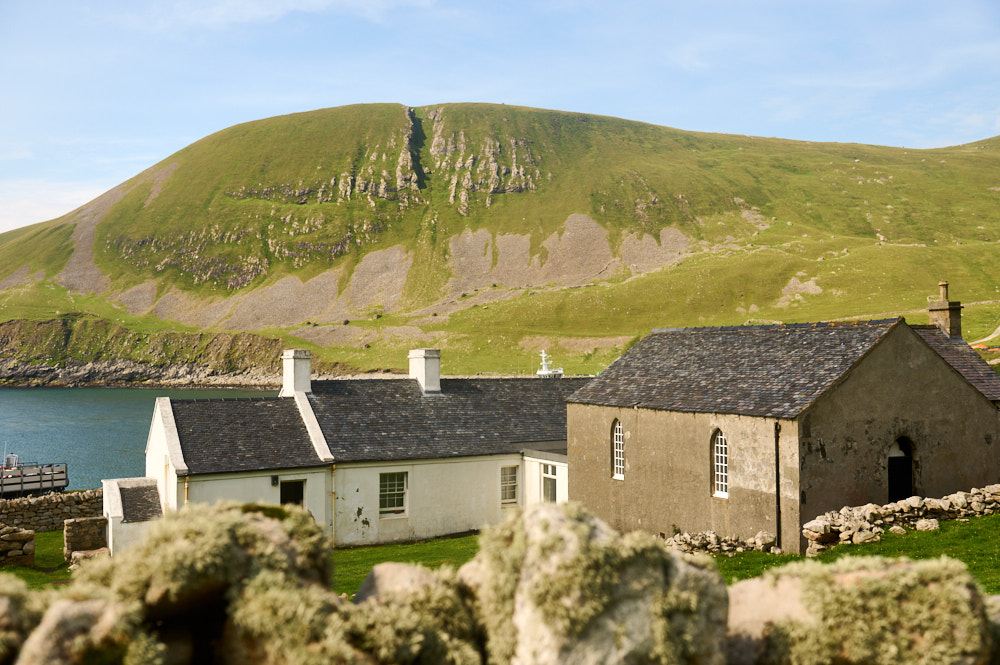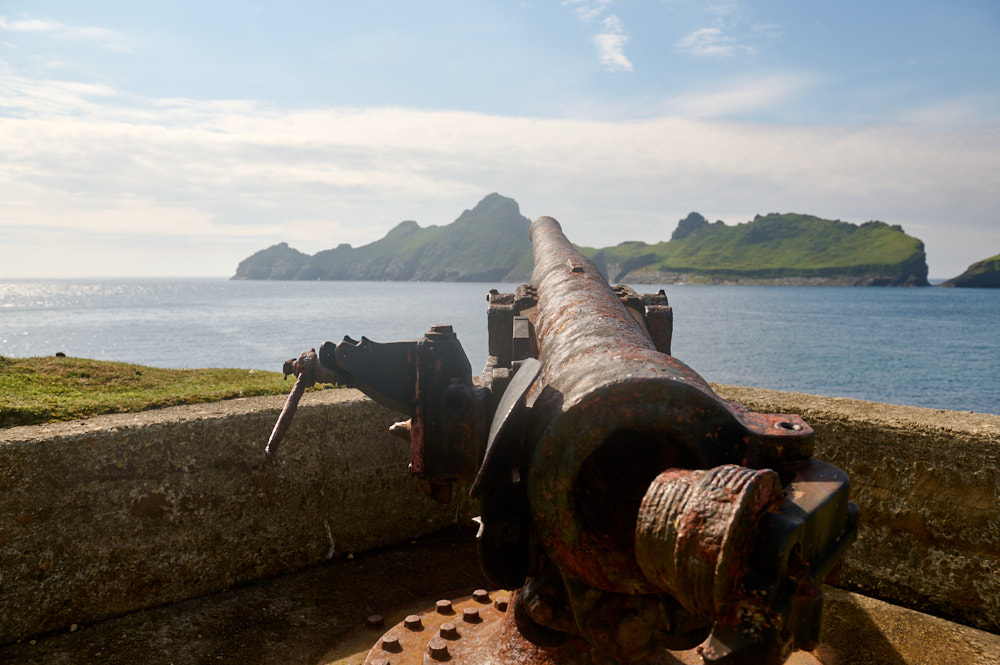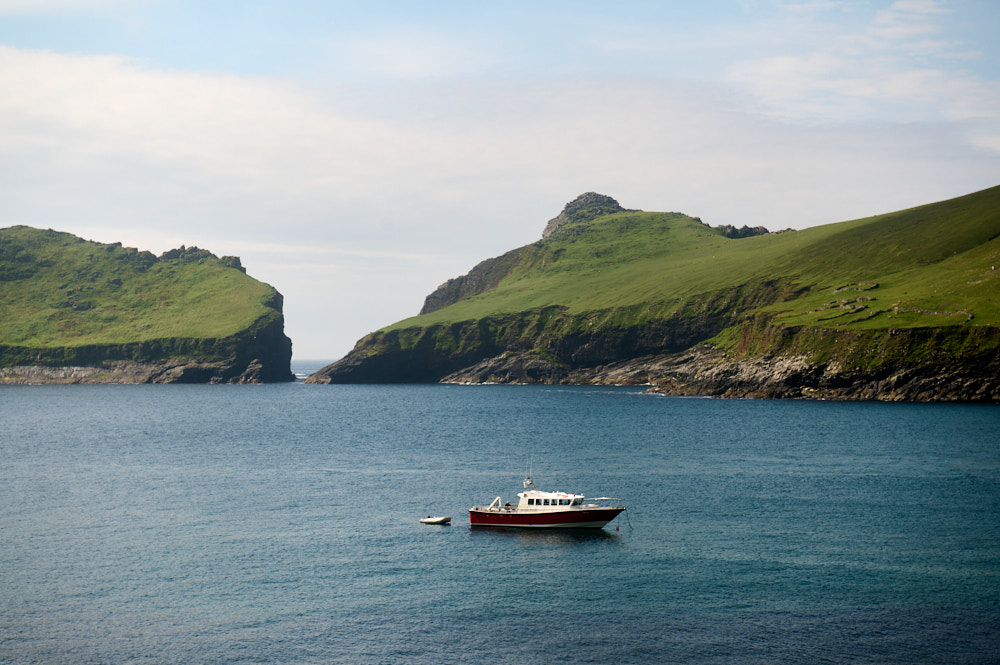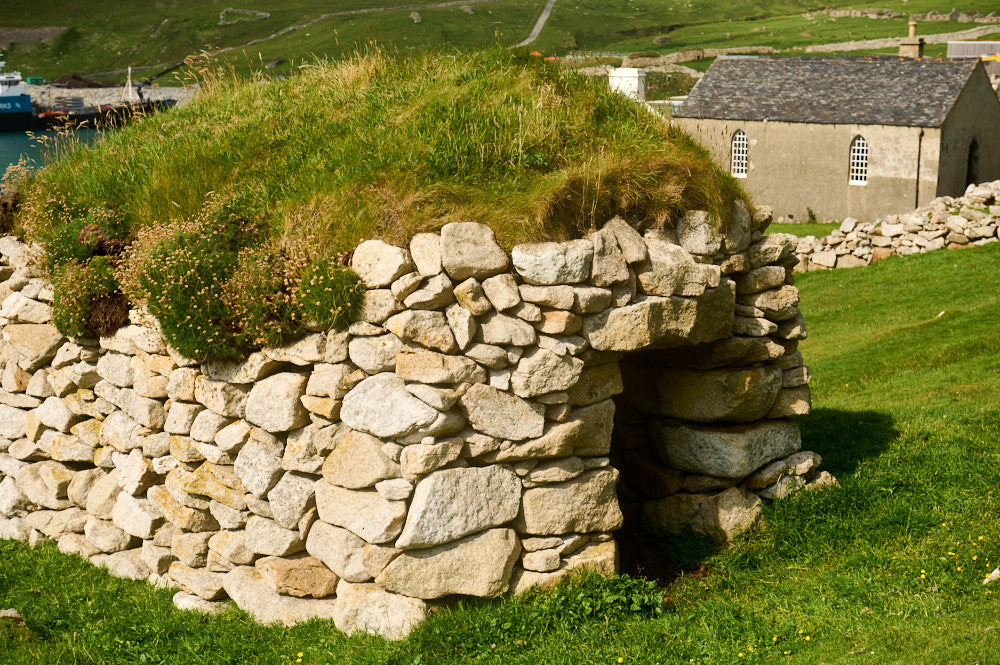I´ve already spent quite some time in Village Bay, but I at least wanted to see a bit of St Kilda from above. There wasn´t enough time to walk up the Conachair, so I chose the shorter but quite steep walk up to the Gap, to see some of the impressive cliffs.
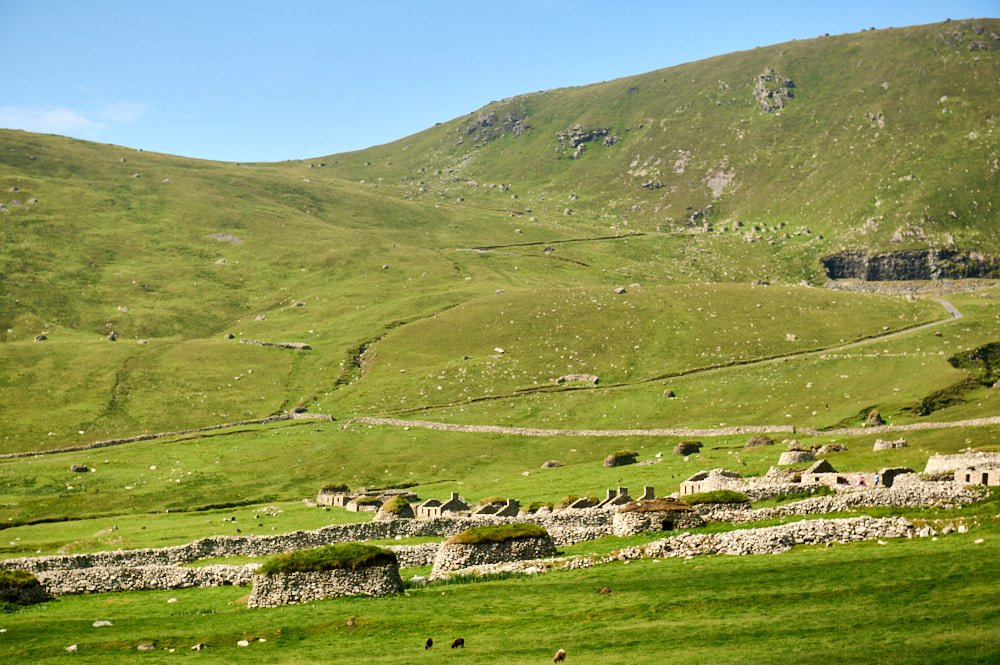
View of the cottages from the Factor´s house as I started to make my way up.
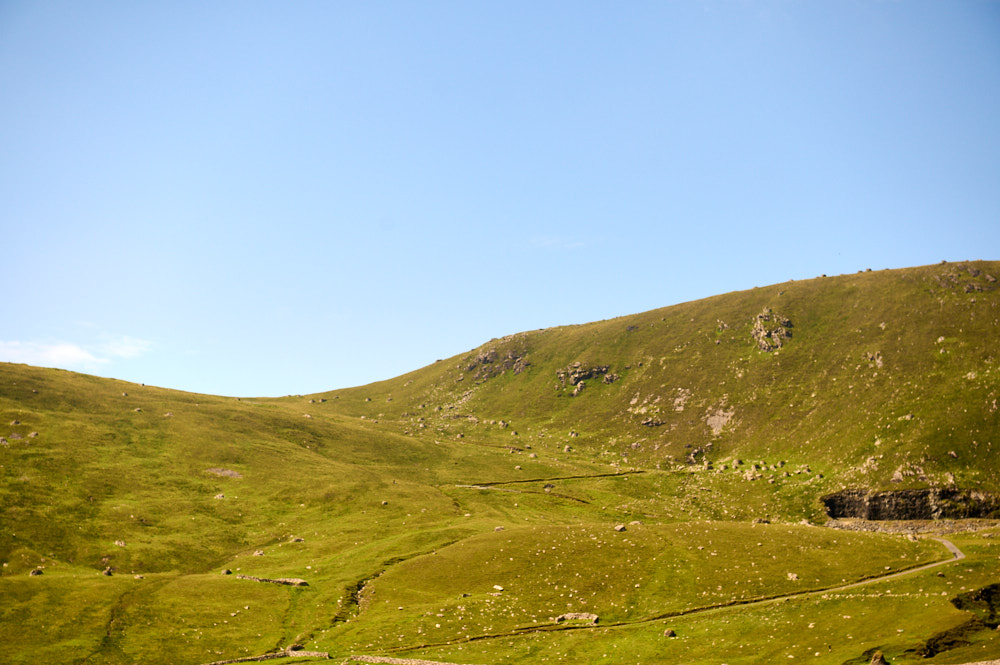

Walking through the many many cleits and looking back towards the row of cottages.

The first stop is a kind of plateau in the middle between the village and the cliffs:
An Lag Bho’n Tuath
There are several stone enclosures and buildings on this plateau. In the last few decades, this area of Hirta has been excavated a few times. They found the remains of cairns (burial places) and ritual areas, that were quite complex structures.

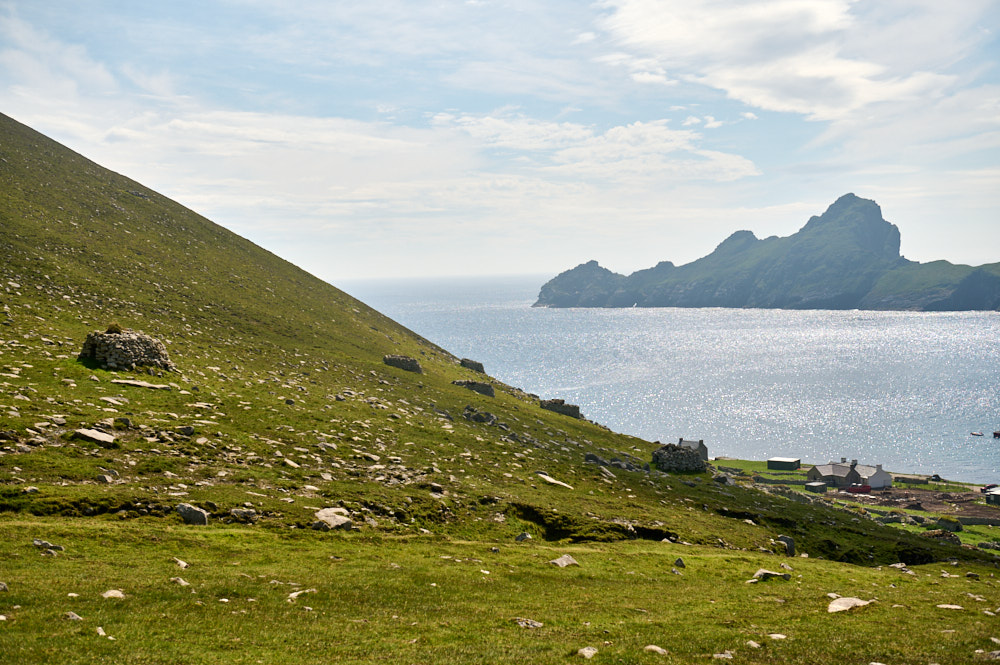
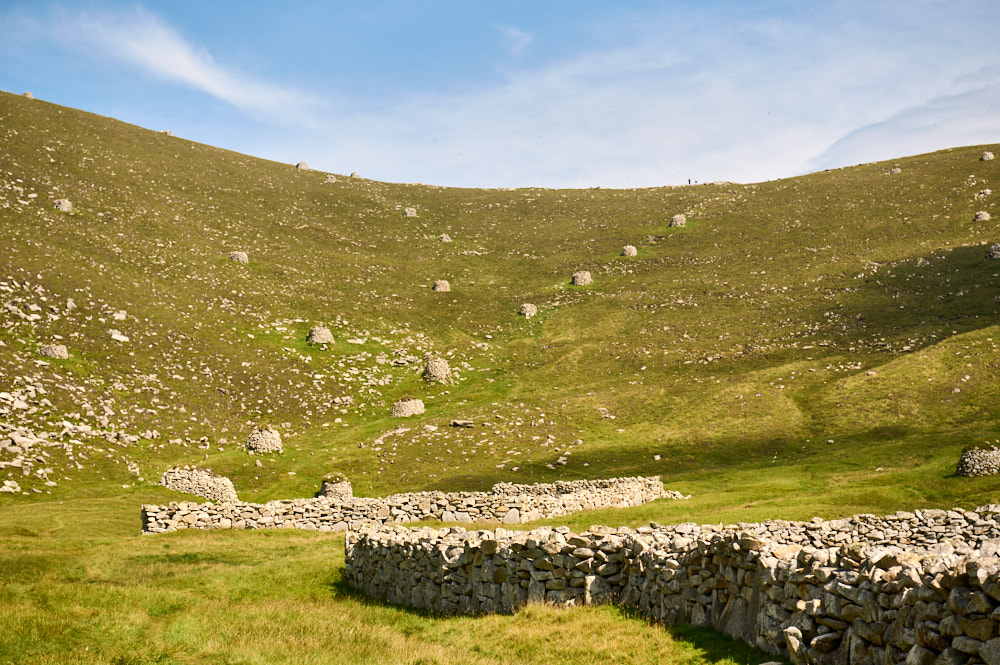
See these cleits going up the hill in a straight line, I walked up the cliffs along those.
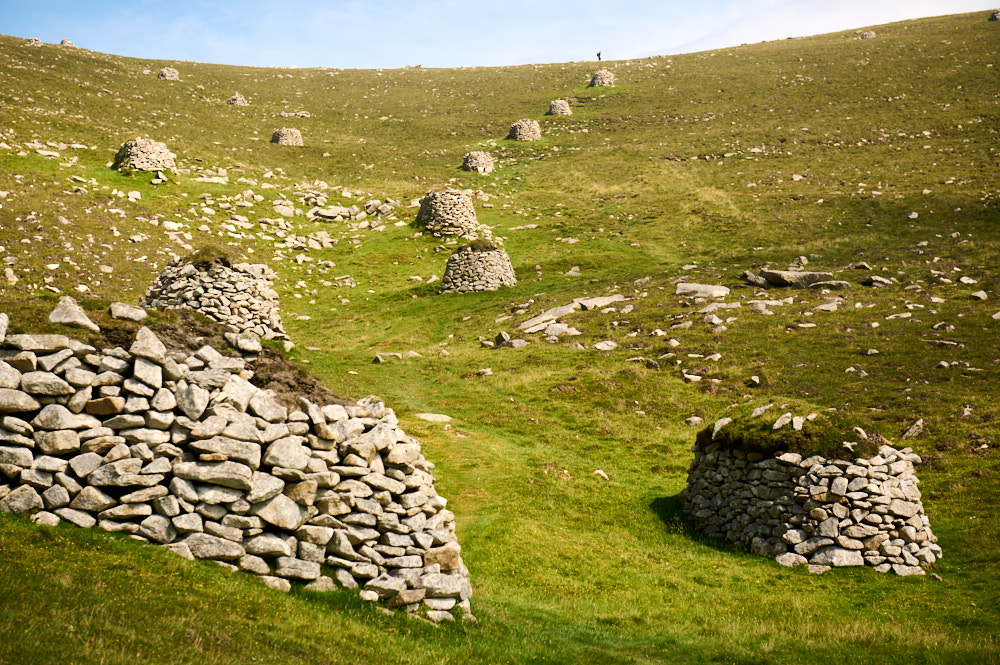
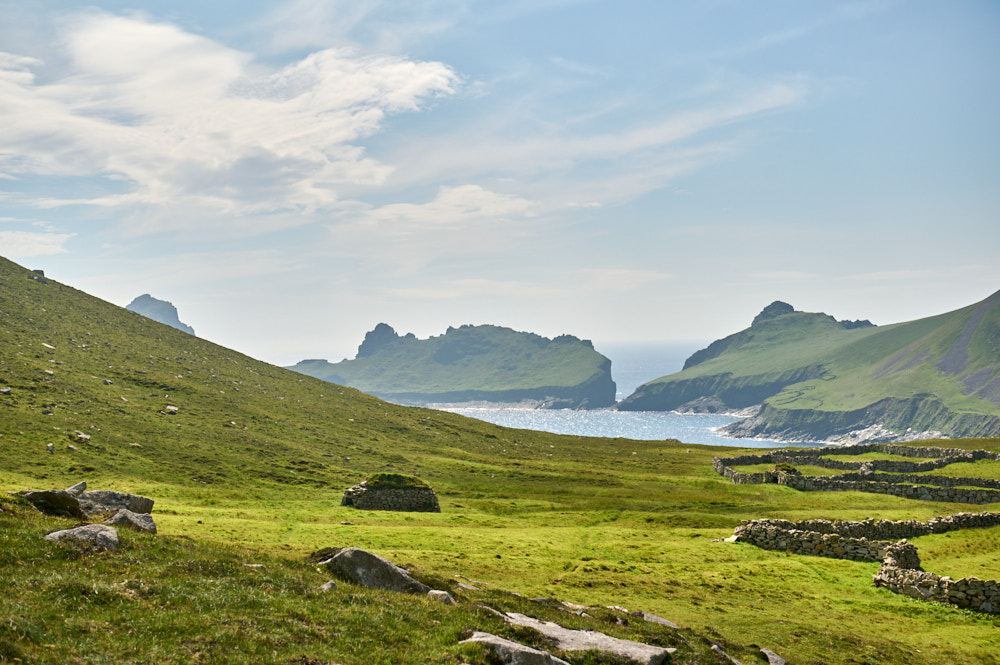

And suddenly I was on the edge of the Gap where the cliffs drop vertically to the sea for 200 metres. I tried looking down, but didn´t manage at the end – just did a quick little peek over the edge, with a very generous distance to the cliffs.
The Gap


I staid a good 2-3 m afar from the edge, but the views were still amazing. I can´t imagine the St Kildians climbing and walking along and in these cliffs, catching the birds and collecting eggs.
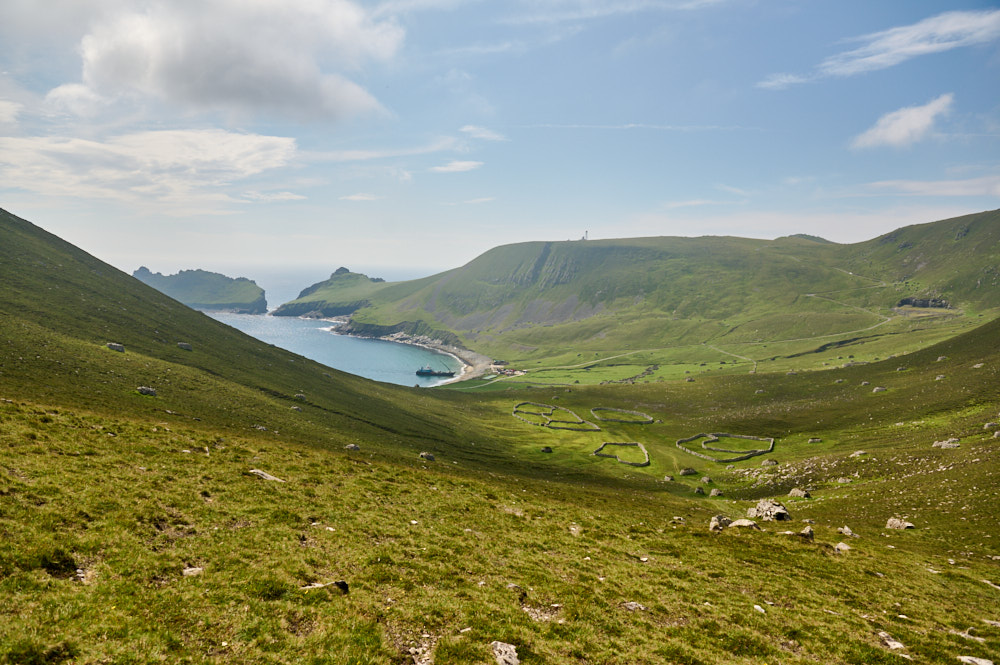
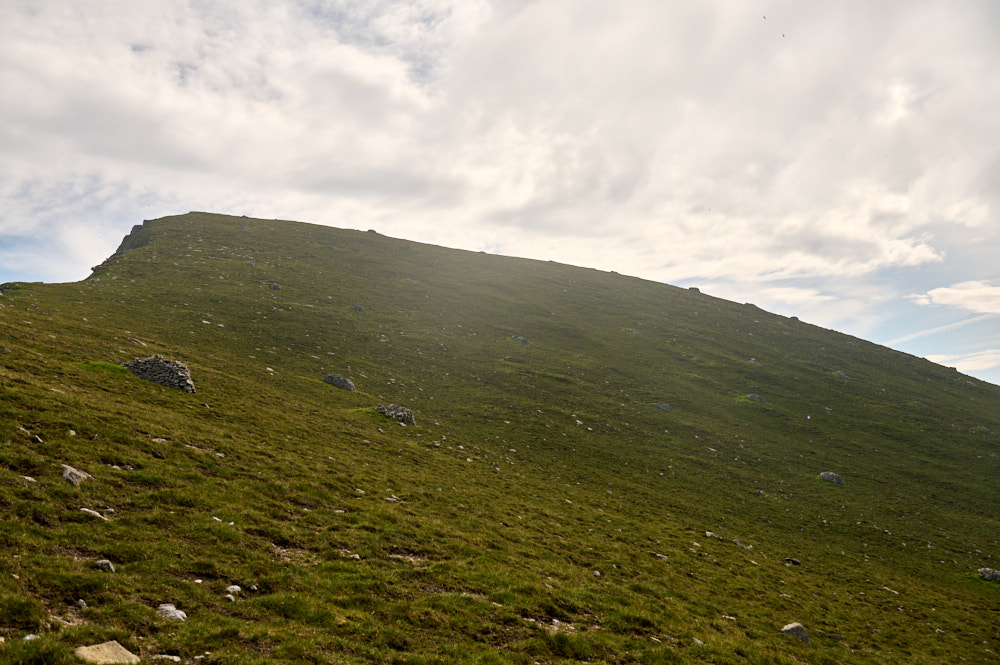
Making my way back down, again along the line of cleits. The ranger had warned us that there are breeding Bonxis, the Great Skuas birds. Big brown birds, also known as bullies as they bully other birds for their food. We were warned that they have their nests in this area and might get angry if we come too close. But as I didn´t have any problems going up I felt pretty safe. Until a group of them started circling around me…
I slowly started to walk back up again but that seemed to make it worse – suddenly I had one of these big guys flying on eye level about 2 metres in front of me – we started a bit of a staring contest. But I remembered Sue’s tip and put my arms up and it finally flew over me – were close to my fingers.
Sue, later on, told us, that she once wanted to see what happens if you don´t put your hands up, and got quite the slap.

I now made my way back down to the other side of the hill – like a few of the others, somehow we all had a run-in with the Bonxies.
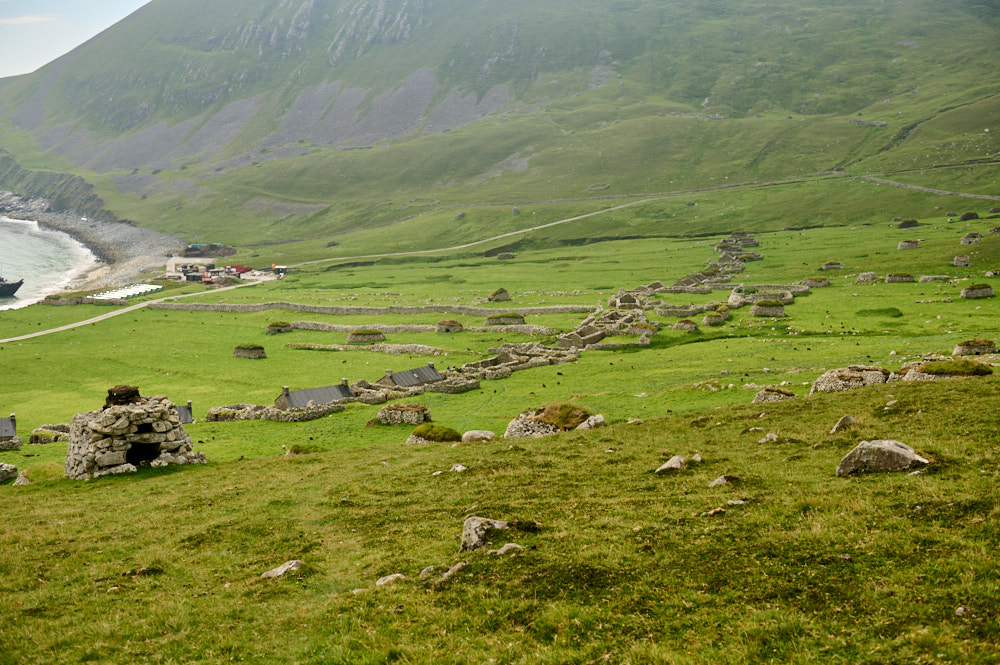
No more staring contests with big brown birds and I arrived safely back in the village.
